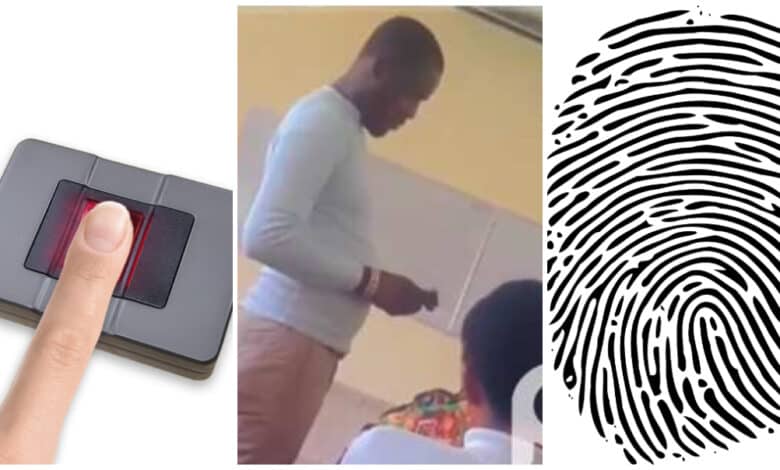The University of Lagos (UNILAG) has taken a bold step into the digital age by implementing a cutting-edge method of tracking student attendance during lectures.
This new approach aims to enhance efficiency and transparency in the attendance monitoring process.
In a video that has recently gone viral on various social media platforms, students at the institution were seen using their fingerprints to mark their attendance.
We're now on WhatsApp. Click here to join.
This innovative system is garnering attention not only for its technological prowess but also for its potential to revolutionize attendance tracking in academic settings.
The traditional method of taking attendance in lectures typically involved paper-based roll calls or the use of student ID cards, which could be susceptible to manipulation and inaccuracies.
The introduction of a fingerprint attendance system offers a more secure and precise means of monitoring students’ participation.
The video showcasing this new system in action has generated a considerable buzz among students, educators, and technology enthusiasts.
Many have praised UNILAG for embracing modern technology to improve the overall educational experience.
The system is expected to reduce the chances of proxy attendance and help lecturers keep a reliable record of students who are actively engaged in their courses.
The fingerprint attendance system operates by using biometric data to confirm the presence of each student.
By simply placing their finger on a scanner, students can register their attendance quickly and accurately.
This method not only streamlines the attendance process but also minimizes the potential for cheating or fraudulent attendance submissions.
READ ALSO: Tragedy Strikes as Woman D!es from Taking In Insecticide
UNILAG is joining the ranks of institutions worldwide that are adopting innovative technology to optimize their operations and enhance security.
Fingerprint recognition is a widely recognized and reliable biometric method, making it a suitable choice for attendance tracking.
While the video has generated excitement and curiosity, UNILAG’s management has not officially announced the full implementation of the fingerprint attendance system.
It remains to be seen whether this method will be applied across all departments and lectures or if it is part of a pilot program.
As educational institutions continue to adapt to the challenges of the digital age, UNILAG’s exploration of the fingerprint attendance system demonstrates its commitment to modernization and the pursuit of excellence in academia.
Whether this innovative approach becomes a widespread practice remains to be determined, but it undoubtedly signifies a promising step toward more efficient and secure attendance monitoring.





